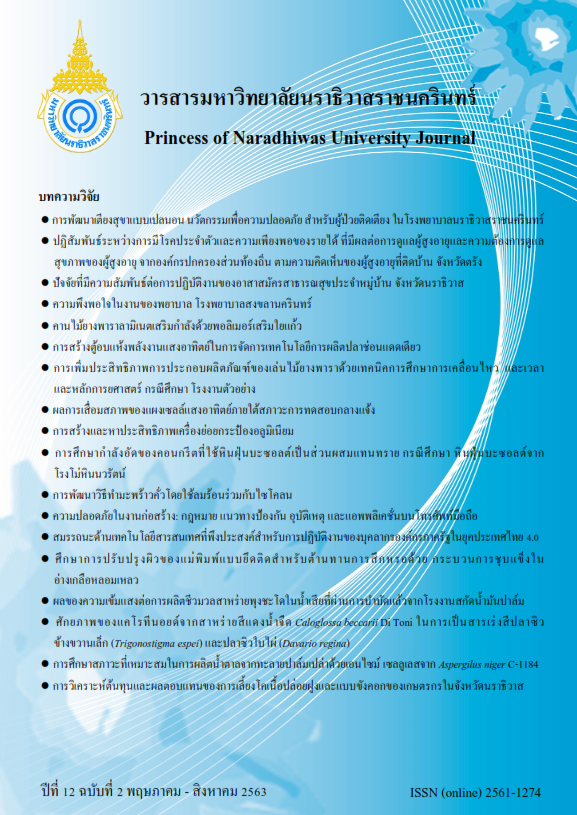The Degradation Results of Photovoltaic Modules under Outdoor Testing Conditions
Keywords:
Photovoltaic modules, PV module standard testing, Degradation of PV module.Abstract
This study presented the photovoltaic module (PV module) degradations of 1 mono-crystalline (c-si) panel, 1 poly crystalline panel and 2 thin-film solar panels (CdTe) under outdoor testing for 365 days. PV modules were tested by visual inspection test, insulation test, wet-leakage current test and standard electrical measurement under standard testing condition (STC) at the CES Solar Cell Testing Center (CSSC), King Mongkut's University of Technology Thonburi (Bang khun thian). All PV modules in this study were certified standard. Testing results showed that the degradation of the maximum power (Pmax) for both the mono-crystalline and the poly crystalline module were higher than the Thin-film modules. This study implied that the selling price of PV module could not guarantee the quality. The high-quality PV modules are subjected to approve by accredited laboratories under ISO17025 or the testing according to IEC 61215 and IEC 61646.
References
Calson, D.E. & Wronski, C.R. (1976). Amorphous Silicon Solar cell, Appl. Phys. 28: 671.
Chenvidhya, D., Kirtikara, K., & Jivacate, C., (2005). PV module dynamic impedance and its voltage and frequency dependencies, Sol Energy Mater. Sol Cells, 86: 243.
DEDE, (2019). Thailand PV status report 2018. Department of Alternative Energy Development and Efficiency Ministry of Energy, Thialand (In Thai).
Deng, X. & Schiff, E.A. (2003). Amorphous silicon-based solar cells, Handbook of Photovoltaic science and Engineering, J. Wiley and Sons Limited, West Sussex, 505-265.
Hamakawa, Y. (1982). .Amorphous semiconductor technology & devices, North-Holland Publishing company.
Ishii, T., & Masuda, A., (2017). Annual degradation rates of recent crystalline silicon photovoltaic modules. Progress in Photovoltaics Research and Applications. 25, 953-967.
Jordan, D.C., & Kurtz, S.R., (2013). Photovoltaic Degradation Rates-an Analytical Review. Progress in Photovoltaics Research and Applications. 21(1), 1-32.
Limmanee, A., Udomdachanut, N., Songtrai, S., Kaewniyompanit, S., Sato, Y., Nakaishi, M., Kittisontirak, S., Sriprapha, K., & Sakamoto, Y., (2016). Field performance and degradation rates of different types of photovoltaic modules: A case study in Thailand. Renewable Energy. 89 (Supplement C), 12-17.
Pivaca, B., Kovacevica, I., & Zulim, I. (2002). Defects induced in amorphous silicon thin films by light soaking, Thin Solid Films 403–404: 513–516.
Radue, E.E. & Dyk, A.V (2010). Comparision of degradation in three amorphous silicon PV module Technology, Sol Energy Mater. Sol Cells 94: 617-622.
Sangpongsanont, Y., Chenvidhya, D., Chuangchote, S., Limsakul, C., Seapan, M., Muenpinij, B., Chenvidhya, T., Parinya, P., & Kirtikara, K., (2016). Thirteen-year Long-term Monitoring and Reliability of PV Module Degradation in Thailand, 26th International Photovoltaic Science and Engineering Conference (PVSEC-26). Singapore.
Silsirivanich, N. (2018). “Thin-film (CdTe) PV modules Power Degradation”. 15th International Conference on Engineering/Electronics, Computer, Telecommunications and Information Technology (ECTI-CON 2018).




